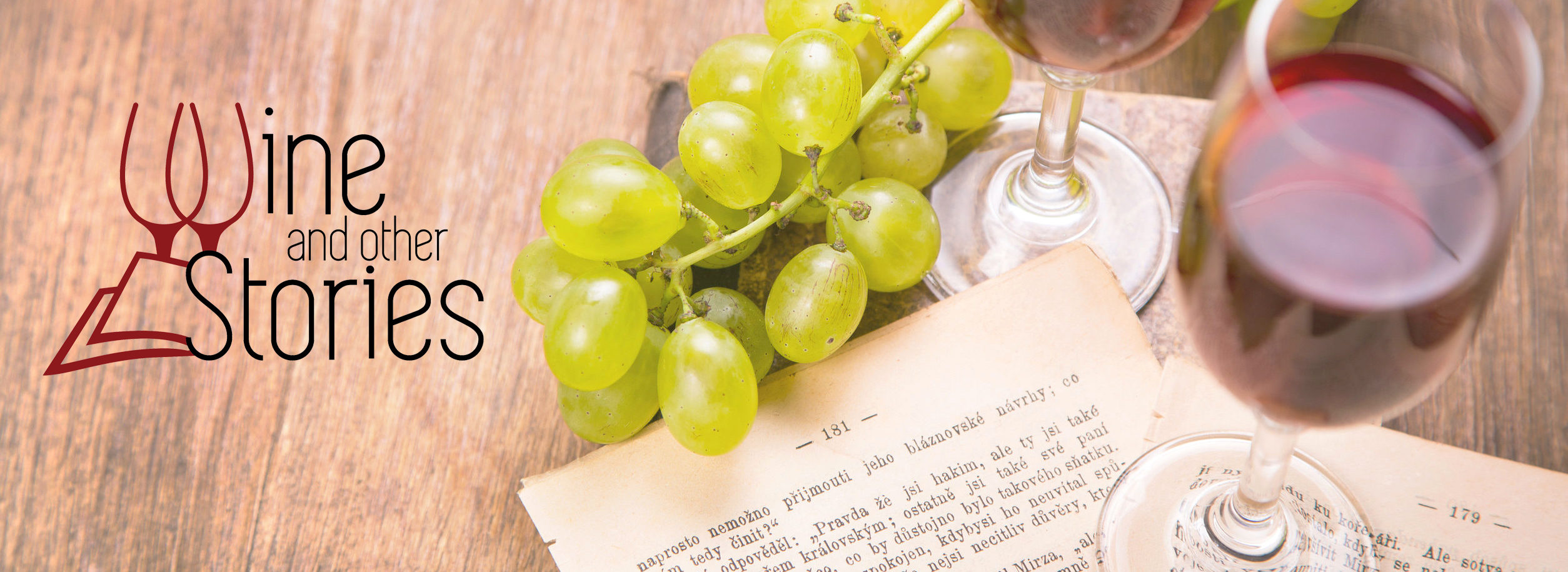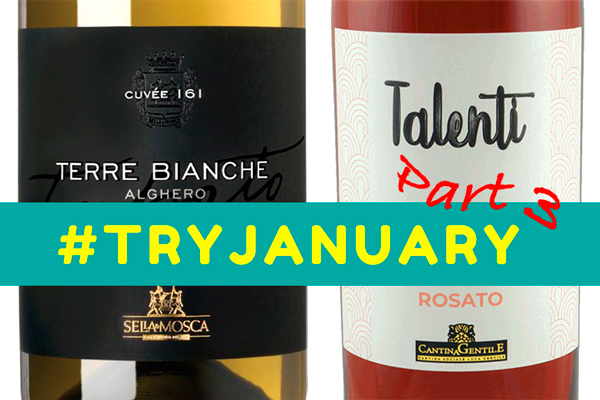My last part of the #TryJanuary series focuses on two hidden treasures of Southern Italy: a torbato from Sardinia and an aleatico rosé from Puglia
Deemed to be the saddest day of the year, Blue Monday is approaching. By now, the Christmas extravaganza is a distant memory and most of us have already resumed the 9-5 routine. If that is not enough, you can make yourself even more miserable pursuing #DryJanuary or other masochistic initiatives that tend to emerge during this period of the year. Why don’t you aim for something uplifting instead?
If you are willing to indulge for a vinous treat (or two – but always pursuing moderation), #TryJanuary is the initiative for you. The idea behind #TryJanuary is to discover less widespread grape varieties or unsung wine regions. It’s a terrific opportunity to broaden your oenophile horizons.
I decided to contribute to the #TryJanuary movement with a series of articles aimed at presenting hidden gems from the Italian wine scene. This is my third (and last) post on the topic. If you have missed my previous parts, here’s what I discussed:
- Part 1 : Serrocielo Falanghina by Feudi di San Gregorio (Campania) and Vigne Rovettaz Cornalin by Grosjean (Aosta Valley), made from humagne rouge
- Part 2 : Magno Megonio by Librandi (Calabria), a 100% magliocco and Ferentano by Cotarella (Lazio), made from the rossetto grape
In this article, I will introduce you to another interesting couple of wines: Terre Bianche Cuvee 161 by Sella & Mosca (Sardinia) and Talenti Rosato by Cantina Gentile (Puglia). Let’s delve into the details of these two curious specimens!

Terre Bianche Cuvee 161 by Sella & Mosca
This wine comes from the Italian island of Sardinia. Specifically, the countryside near Alghero, in the north-west part of the region. Alghero is famous for its crystalline water, wonderful beaches and compelling history. The city was founded in 1102 by the Doria family from Genoa (one of the most prominent maritime families at that time). Under Peter IV of Aragon, Alghero became a Catalan colony in the 14th century. Vestiges from both periods are still visible in the city’s architecture.
As an appellation, Alghero DOC covers a diverse array of wines. Red, rose, white and sparkling are produced in this DOC using a large range of local and international grape varieties. This variegated lot of grapes includes torbato, the varietal from which Terre Bianche Cuvee 161 is made.
Torbato is a Mediterranean white grape variety that today is grown exclusively in Sardinia, and specifically in the Alghero area. The grape’s origin is disputed; some researchers believe it came from Greece, others think it’s of Spanish descendance. Genetic analysis showed that torbato is related to the Portuguese grape arinto. Perhaps that gives some hints to the grape’s origin.
We have to thank the efforts of Sella & Mosca winery for the existence of torbato wines today. Over the last decades this company has almost single-handedly revived the grape.

Sella & Mosca - Terre Bianche Cuvee 161, 2018

 Country: Italy
Region/appellation: Sardegna - Alghero DOC
Wine style: Dry white - Tropical and Balanced
Grape(s): Torbato
Average price: £16
Country: Italy
Region/appellation: Sardegna - Alghero DOC
Wine style: Dry white - Tropical and Balanced
Grape(s): Torbato
Average price: £16
In 1899, a couple of gentlemen from Piemonte visited the Alghero area which is in the north-west part of Sardinia. Mr. Sella (an engineer) and Mr. Mosca (a lawyer) recognised the beauty of that pristine land. At that time, the phylloxera pest was causing havoc throughout Europe and destroying large hectares of vineyard. The two men recognised a business opportunity. Taking advantage of the secluded position of Sardinia as an island, they founded Sella & Mosca as a nursery to provide healthy rootstock for the replanting of new vines.
Sella and Mosca created one of the biggest vineyard areas in Europe, growing and cataloguing over 1600 grape varieties and 300 rootstock. Over time, and despite changes of ownership, Sella & Mosca kept growing grapes.
Currently, the estate extends for 550 hectares. The vineyard area is so big that the company built an entire village around the winery, with houses for the workers and their families, a church and a primary school.
In spite of its gargantuan dimension, Sella & Mosca still focuses on quality wine. Their labels include both international and local grape varieties. Torbato, this wine’s grape, is one of Sella & Mosca’s highlights. They produce a range of wines from this varietal, and this Terre Bianche Cuvee 161 is their best expression of torbato. The name “Terre Bianche” (White Lands) is an indication of the calcareous and chalky soil (of maritime origin) where the vines are grown.
Tasting notes
(tasted on: 24-Dec-2019)
Rich lemon hue in the glass, on the nose this white expresses an intense fruitiness, with aromas ranging across ripe quince, juicy lemon and nectarine. Hints of green olive, sage and tarragon come through along with a subtle salinity reminiscent of seaweed.
On the palate, the wine has a full body and a tremendous structure, thanks to 6 months of lees contact and 15% of barrel maturation. The acidity is ideal too – conferring a great freshness. The lovely fruitiness mingles with honeyed notes of yellow flowers and Mediterranean shrubs. A flinty minerality is supported by echoes oyster shell. This wine would be the perfect match for flavoursome dishes coming from the sea.
Wine and other Stories rating: 8.9/10
Talenti Rosato by Cantina Gentile
For most people, rosé wine is a synonym for summer. Its delicate and fresh flavours match splendidly with high temperatures and sunny days.
What if I told you that there are rosé wines designed for the winter? One of them would certainly be Talenti Rosato by Cantina Gentile. With almost 15% abv of alcohol, this rosé isn’t for the faint of heart. It’s warm and aromatic; almost like a winter red yet still preserving a great deal of freshness.

Talenti Rosato is entirely made from aleatico. Famous Italian wine expert Ian D’Agata described wines made from this grape as being “among the wine world’s most undervalued treasures; […] they can demonstrate a thrilling combination of raciness and richness”.
Aleatico is an interesting varietal. Like many other Italian native grapes, Aleatico is thought to be of Greek origin. DNA analysis suggests aleatico is related to sangiovese, lacrima, but also muscat blanc a petit grains. The latter shouldn’t come as a surprise, since aleatico is quite aromatic.
Aleatico is vinified as a red or rosé and it can produce interesting sweet wines. It’s said that aleatico wine was a great favourite of Napoleon, who affirmed that this wine was the only consolation during his exile in Elba island. In Italy, aleatico is grown mainly in Lazio, Tuscany, Marche and Puglia. This Talenti Rosato comes from Puglia, the heel of the boot-shaped Italy. The region is notorious for its beautiful pink wines. For more information, check out my article “Five rosé from Puglia that you should try”.
Cantina Gentile - Talenti Rosato, 2018

 Country: Italy
Region/appellation: Puglia - Puglia IGT
Wine style: Dry rosé - Rich and Fruity
Grape(s): Aleatico
Average price: £7
Country: Italy
Region/appellation: Puglia - Puglia IGT
Wine style: Dry rosé - Rich and Fruity
Grape(s): Aleatico
Average price: £7
In 1960, a group of 25 wine growers led by Luca Gentile founded a co-operative (called “cantina sociale” in Italian) in the village of Cassano delle Murge. The area is located in the midst of the Murge plateau, a series of low rolling hills in Puglia’s hinterland.
Today, the Gentile co-operative has 400 growers, with several hectares stretching between Gioia del Colle and Altamura. Here, the main appellation is Gioia del Colle DOC which is devoted to primitivo. Cantina gentile also produces white and rosé wines, like this wine they are classified as a general Puglia IGP.
Talenti is made from 100% aleatico, sourced from the Murge hills having an elevation between 350 and 500m. After the harvest, the berries are briefly macerated on their skin, then the wine is fermented in stainless steel vats at a controlled temperature.
Tasting notes
(tasted on: 30-Dec-2019)
This wine is vinified as a rosé, but you’d be better off considering it a light red. Starting with the colour, it is a vivid strawberry hue in the glass. The nose exhibits plenty of red fruit notes (strawberry, cranberry, wild red cherry), along with Mediterranean shrubs and a pleasant flowery undertone (rose, red geranium).
On the palate, this rosé is rich and has herbal, red fruit and grapefruit nuances. Pepper and red spices in the mid-palate. The finish has a comforting warmth. Despite its 14.5% abv, this Talenti rosé achieves a good harmony. Medium+ intensity of flavours, this rosé has a terrific drinkability – and it’s outstanding value for money!
Wine and other Stories rating: 8.7/10

Conclusion
Alas, all good things must come to an end. I hope you enjoyed this last blog article dedicated to the #TryJanuary initiative. My goal was to spark your curiosity by inviting you to get out of your vinous comfort zone. Trying new wine regions and/or obscure grape varieties is an excellent way to shake things up.
In case you missed my earlier two episodes of the #TryJanuary series, here is a brief recap of what I wrote about:
- Part 1 : Serrocielo Falanghina by Feudi di San Gregorio (Campania) and Vigne Rovettaz Cornalin by Grosjean (Aosta Valley), made from humagne rouge
- Part 2 : Magno Megonio by Librandi (Calabria), a 100% magliocco and Ferentano by Cotarella (Lazio), made from the rossetto grape
- Part 3 (this article): Terre Bianche Cuvee 161 by Sella & Mosca (Sardinia) made from torbato and Talenti Rosato by Cantina Gentile (Puglia) produced from aleatico
Even though I won’t write other articles on #TryJanuary, I’m always up to discover hidden gems and new wines. So if you are willing to share your latest oenophile discoveries, please drop a comment below or contact me with through social media. Salute!


Comments · 1